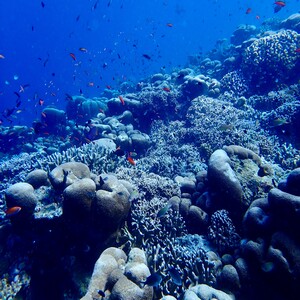
Image credit: David M Baker
 Researchers // Professor Moriaki YASUHARA, Professor of the School of Biological Sciences, and his former PhD student Dr Skye Yunshu TIAN
Researchers // Professor Moriaki YASUHARA, Professor of the School of Biological Sciences, and his former PhD student Dr Skye Yunshu TIANCollaborator // CNRS, Princeton University, University of the Philippines and others
The Coral Triangle, also known as the Indo-Australian Archipelago, is the crown jewel of marine biodiversity — and now scientists finally understand what made it so special. Around 20 million years ago, tectonic plate collisions created vast shallow habitats, triggering an explosion of marine life. Unlike other regions, the Coral Triangle was lucky enough to avoid the large extinction events that wiped out species elsewhere. Cooler temperatures 14 million years ago gave it an extra boost, helping it become the world’s most biodiverse underwater ecosystem.
But this underwater paradise is not invincible. Scientists warn that human-driven climate change could unravel millions of years of evolution, putting this incredible biodiversity at serious risk. The Coral Triangle owes much of its richness to luck, but saving it will take far more than that.
珊瑚大三角,又稱印澳群島,是地球上海洋生物多樣性最豐富的地區之一。然而,它為何能如此得天獨厚,一直是個未解之謎。我們的古生物學研究揭開了這片區域屹立至今的秘密。研究顯示,自早中新世以來,該地區的生物多樣性持續增長,並在約 260 萬年前達到巔峰。這得益於板塊運動創造了廣闊的淺海棲息地,加上氣溫下降,進一步促進了生物多樣性的繁盛。更幸運的是,這片區域多次避開了重大的物種滅絕事件,得以在天時地利的條件下蓬勃發展。
然而,我們的研究也警告,若人為氣候變暖持續加劇,這片生物多樣性熱點將面臨嚴重威脅,甚至可能失去其珍貴的生態資源。
Journal paper: Cenozoic History of the Tropical Marine Biodiversity Hotspot (published in Nature, 2024)
| < Previous | Next > |

